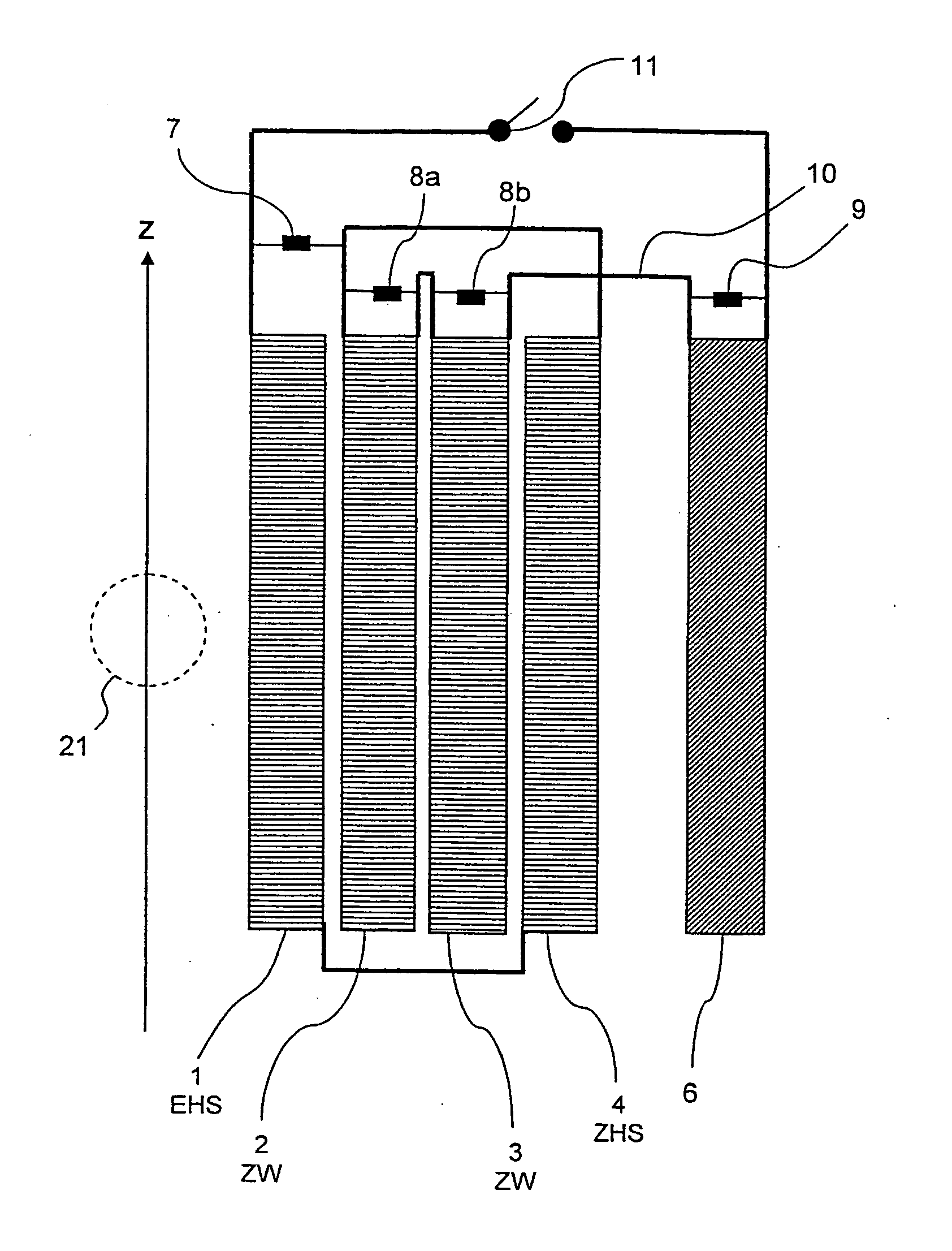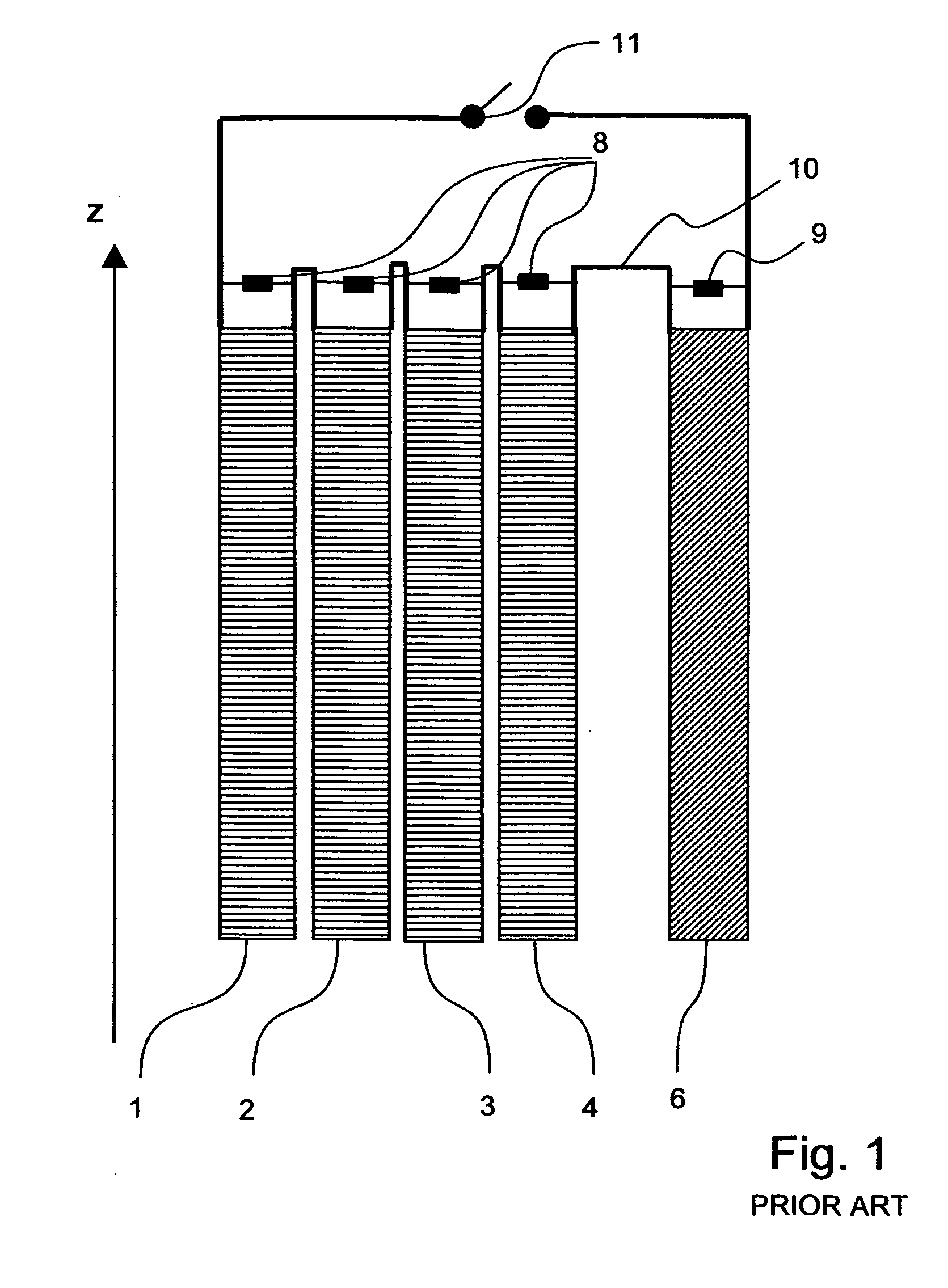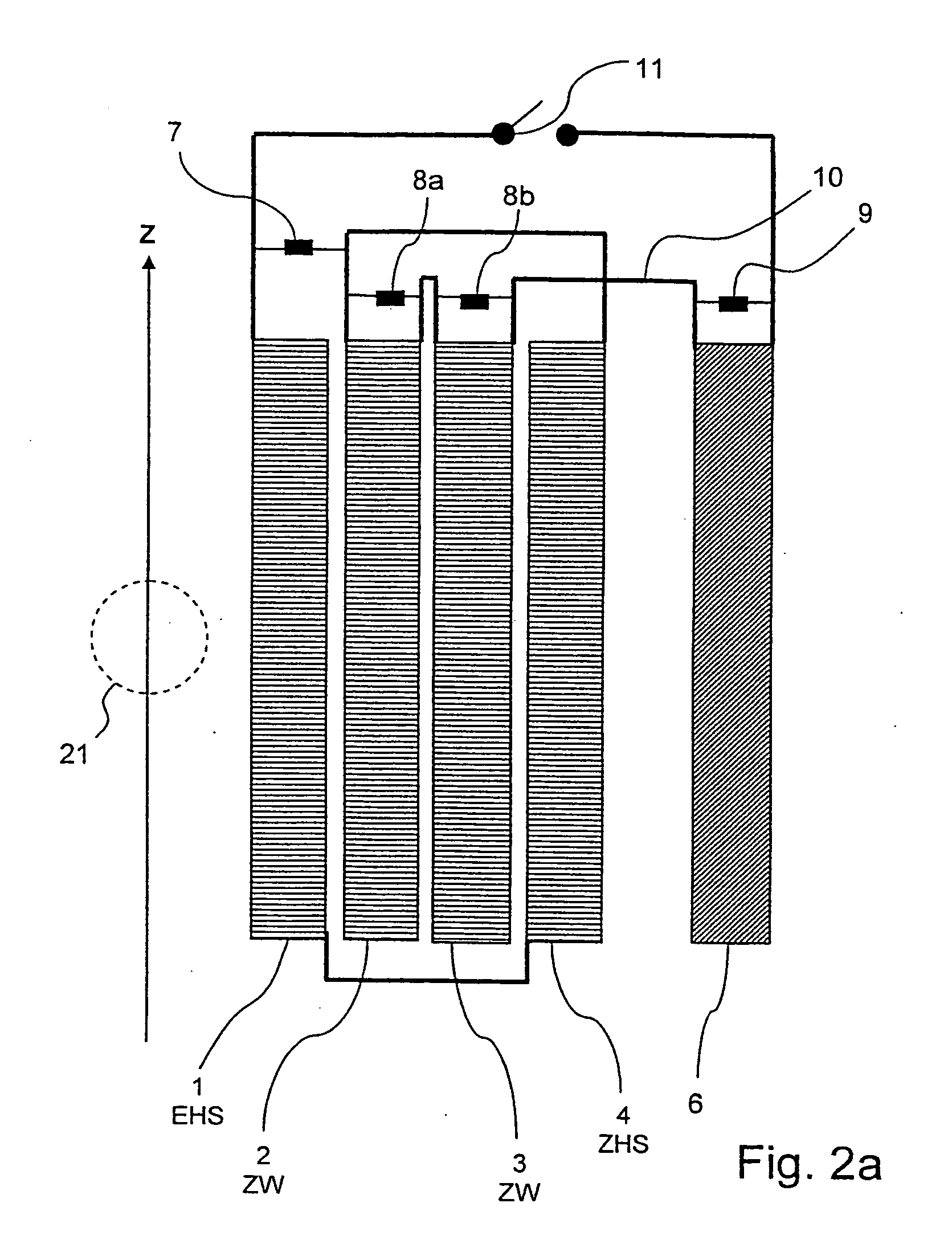Superconducting magnet coil system with quench protection for the prevention of excessive localized currents
a superconducting magnet coil and localized current technology, applied in the direction of superconducting magnets/coils, emergency protective arrangements for limiting excess voltage/current, reradiation, etc., can solve the problem of superconducting magnet coil system being jeopardized, superconducting magnet coil system being damaged, superconducting heat generation localized, etc. problem, to achieve the effect of high critical magnetic field, high magnetic field strength, and simple construction
- Summary
- Abstract
- Description
- Claims
- Application Information
AI Technical Summary
Benefits of technology
Problems solved by technology
Method used
Image
Examples
Embodiment Construction
[0050]FIG. 1 shows a magnet coil system according to prior art (e.g. according to Wilson, l.c) with a main field coil which is disposed about an axis z, consisting of the main coil sections 1, 2, 3, 4 and with a shielding coil 6 which radially surrounds the main field coil. It should be noted that essentially only the right-hand half of the magnet coil system is illustrated (which also applies for the other figures) for reasons of simplicity. The main field coil and the shielding coil 6 can be superconductingly short-circuited via a superconducting main switch 11. The main field coil and the shielding coil 6 are connected in series via a superconducting electrical connection 10. The main coil sections 1, 2, 3, and 4 are each separately protected by a protective resistance 8. The shielding coil 6 is also protected by its own protective resistance 9.
[0051]At least the innermost main coil section 1 of the main field coil of superconducting high-field magnet systems regularly contains a...
PUM
| Property | Measurement | Unit |
|---|---|---|
| superconducting | aaaaa | aaaaa |
| quench protection resistance | aaaaa | aaaaa |
| critical magnetic field | aaaaa | aaaaa |
Abstract
Description
Claims
Application Information
 Login to View More
Login to View More - R&D
- Intellectual Property
- Life Sciences
- Materials
- Tech Scout
- Unparalleled Data Quality
- Higher Quality Content
- 60% Fewer Hallucinations
Browse by: Latest US Patents, China's latest patents, Technical Efficacy Thesaurus, Application Domain, Technology Topic, Popular Technical Reports.
© 2025 PatSnap. All rights reserved.Legal|Privacy policy|Modern Slavery Act Transparency Statement|Sitemap|About US| Contact US: help@patsnap.com



